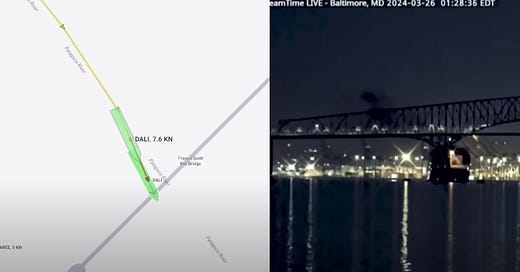As a true crime author, I have always found it extremely useful to construct a detailed timeline of known events that occurred just before a suspicious incident or crime took place. Likewise, ever since I saw the 1977 film The Deep, I have been fascinated by shipwrecks. A few years later I read Walter Lord’s classic A Night to Remember about the sinking of the Titanic, and was hooked on maritime disasters.
My fascination was greatly amplified in 1985 when I saw the news in Time magazine that Mel Fisher had found the Atocha Spanish treasure galleon in the Florida Keys—a galleon that sank in a 1620 hurricane. Fischer’s amazing discovery inspired me to read all the literature I could find on famous shipwrecks in history.
I even wrote a rough draft of a novel about a young adventurer who discovers the wreck of the Flor de Mar, which sank off the northeast coast of Sumatra in 1511. The vessel contained the entire plundered treasury of the Sultan of Malacca, the world’s richest man at the time.
In 1989, as a young and ardent environmentalist, I was horrified by the wreck of the Exxon Valdez in Prince William Sound. Twenty-one years later, the Deepwater Horizon drilling rig exploded in the Gulf of Mexico. Like the wreck of the Valdez, the drill rig disaster was thoroughly preventable.
As a lifelong windsurfer and sailor, I am familiar with the way wind and current act on a vessel—both under sail and when powered by a marine diesel. Though I have never steered a large cargo ship, I have handled heavy (30,000 pound) 50-foot cruising yachts in tight marinas.
One of the first things you learn is that, even when traveling at slow speeds, a heavy vessel has a HUGE amount of momentum and glide. There’s an old saying about entering a crowded marina in a heavy yacht—”Slow is Pro.” It’s a fine line, however, because if you go too slow, you will lose rudder command.
As a matter of elementary physics, a 100,000 ton cargo ship with a 980-foot hull with a 48-foot draught and a gigantic rudder traveling at 8.5 knots has an astronomical amount of momentum. Even if propulsion is lost, it will continue to glide in a straight line for well over a mile unless significant external forces such as strong wind and currents are applied to the vessel.
Bearing this in mind, I have assembled the following timeline of the Dali’s final five minutes:
1:07:00: Enters Ft. McHenry Channel on a 140 degrees (true) heading.
1:24:00: 141 course/ 8.5 knots.
1:24:33: Ship loses power/ 141 course/ 8.7 knots.
1:24:59: Power loss/ VDR loss.
1:25:31: Auxiliary power comes on 58 seconds later (exceeding 45 second legal requirement by 12 seconds). Ship still on course at 8.7 knots.
1:26:02: VDR resumes recording/: From VOD: “During this time steering commands are issued.” Ship still on course at 8.7 knots.
01.26:37: Ship loses power second time.
01.27:04: Ship still on course. From VOD: “Pilot commands dropping of port anchor and issues additional steering commands.”
01.27.11: Power restored second time. Vessel has slowed to 7.7 knots and turned 11 degrees to starboard/ now steering 152 degrees on collision course with bridge pier.
01.27.25: Radio report Dali had lost all power and approaching bridge.
1:28:30: Power resumes third time.
01:28:45: Ship strikes bridge.
NOTE that the vessel was holding its course to glide safely under the bridge until about 01:27:04. Thus, the critical loss of control occurred less than two minutes before the vessel reached the bridge.
Key Questions for Investigation
1). What were the steering commands issued at 1:26:02 and 1:27:04?
This is the critical question that needs to be answered. Does the VOD indicate that the helmsman was able to execute these orders? Just turning the helm a few degrees to port when the power was restored for a few seconds should have steered the vessel closer to the center of the channel that exits the bridge through a 1,200-foot gap between the two main piers.
2). What exactly caused the Dali to turn 11 degrees to starboard just before it struck the bridge?
As I have noted in previous posts, the (negligible) 4.5 knot wind blowing from 35 degrees (on the port quarter) was completely canceled by the 7.6 to 8.5 knot wind on the vessel’s nose (at 140 degrees) from moving through the air.
Some commentators have suggested that the tail end of an ebb tide (just before slack tide) out of Curtis Creek, combined with wave pressure of the vessel’s hull interacting with the channel banks, may have caused the stern to move to port and the bow to swing to starboard, but this strikes me as extremely theoretical. The same (theoretical) lateral forces would have also affected the forward part of the ship and caused the entire vessel to pull to port, not only the stern.
3). What caused the primary power loss?
4). What caused the repeated loss of auxiliary power?
5). What are the odds of all of these anomalous failures happening less than 2 minutes before the ship passed the pier of a major bridge?
NOTE: Contrary to media reports, the Dali is NOT an old ship. Built at the end of 2014 and christened in 2015, she is five years younger than the average age (14) of the world’s container fleet.
I hope that the National Transportation Safety Board will conduct a rigorous and transparent investigation to determine what precisely caused this terrible disaster.






Thanks for this detailed investigation. Is there any evidence this ship lost power at any other time in its history?
Sure looks like this ship was steered into the bridge.
I'm a master helmsman. I did an article giving my theory about what happened you might be interested in. https://michaelsuede.substack.com/p/master-helmsmans-take-on-the-dali